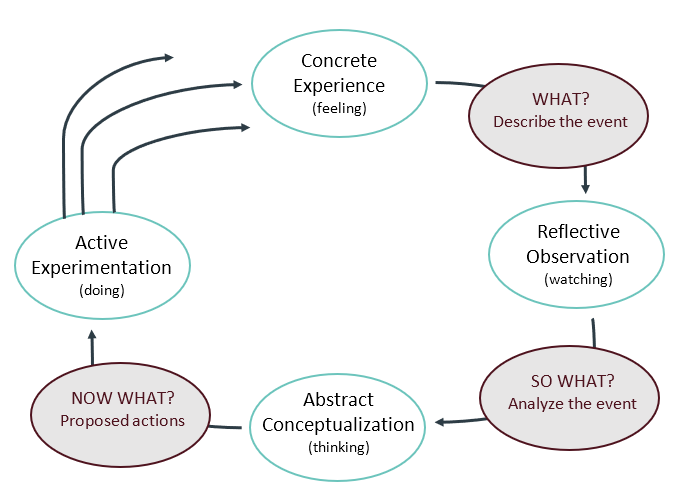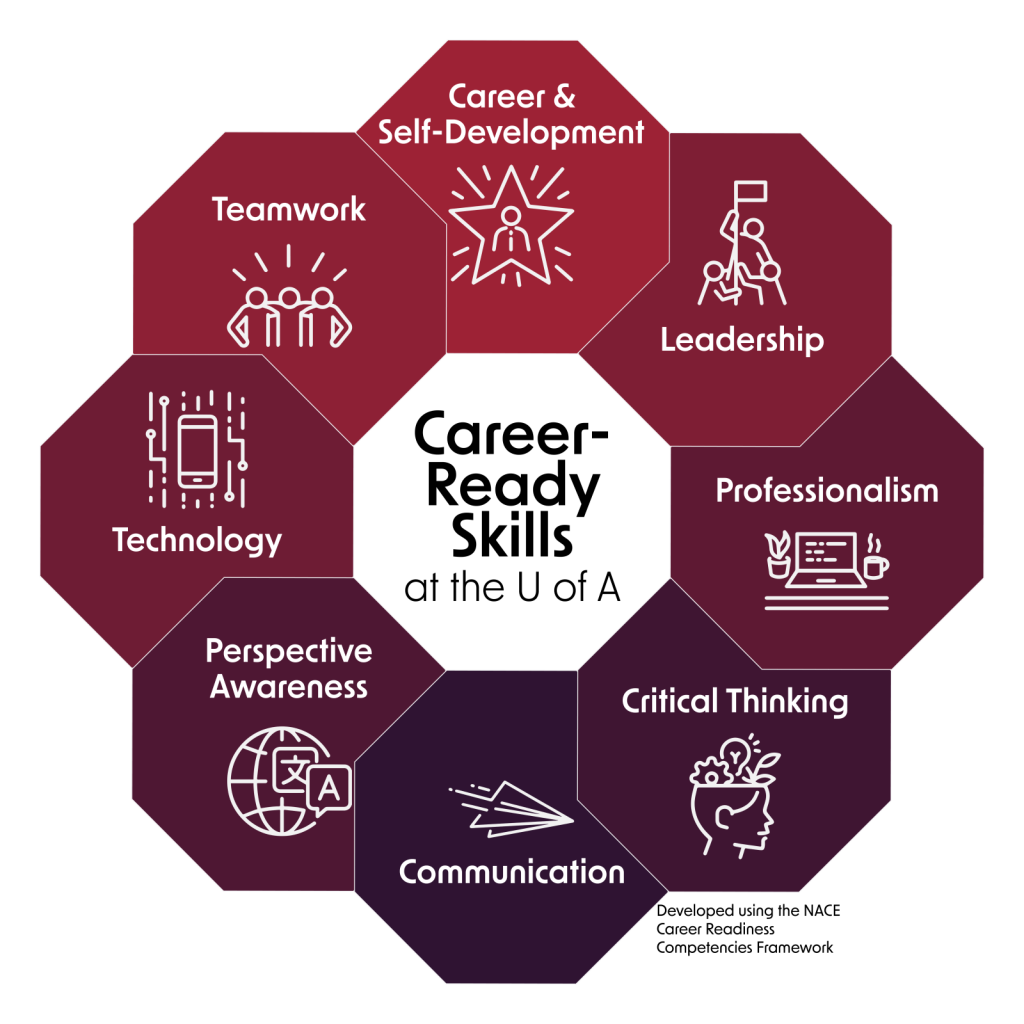Reflection, Sharing, & The All Important Elevator Pitch
Christine Rickabaugh
Reflection
Reflection is not a superficial process of introspection. Rather, it is an evidence-based, integrative, analytical, capacity-building process that serves to generate, deepen, critique, and document learning. Additionally, the development of reflective skills is central to students’ academic and professional development within a discipline. The ability to reflect on one’s practice when confronted by a novel, unusual, or complex situation distinguishes expert practitioners from novices (Schön, 1983).
According to Salomon and Perkins, self-reflection helps students to:
- review the group process and their own personal functioning in the group
- understand how their learning and problem-solving strategies might be reapplied
- relate new knowledge to prior understanding (1989).
Driscoll Model of Reflection
As you learn to reflect, it can be helpful to use worksheets or other tools to help you. One of the most important models for reflection was created by John Driscoll in 1994. The Driscoll model incorporates the “what”, “so what”, and “now what” of the experience into your reflection (Driscoll, 1994). This means that you aren’t just describing what happened. You are taking your experience, identifying what was significant about it, and then determining what you should do next. The Driscoll model of reflection is often utilized within clinical settings; however, it can apply to various experiential learning. The model is integrated with Kolb’s learning cycle and includes trigger questions to prompt thinking through the reflection. The two processes create an experience for self-directed learning to inspect, analyze, challenge, transform, and apply behaviours towards desired outcomes.


Driscoll (1994) explains the “WHAT” of the model to recall the experience and what was felt at the time to begin the reflective cycle. “SO WHAT” analyzes the experience, examining the reactions and feelings it elicited and whether the outcome was successful or disappointing. “NOW WHAT” processes the experience and the lessons to put into context actionable ideas and behaviours to move forward with.
The Elevator Pitch
What is an elevator pitch? It’s a brief summary of who you are, what you do, and your goals. (Emphasis on brief!) The idea behind an elevator pitch is for you to describe what you do to anyone in 30-60 seconds and have them walk away understanding it. The name is in reference to being able to explain what you do during a short elevator ride. It can and should be tailored to your audience. For example, you might have one elevator pitch you give at parties, one for family and friends, and another for speaking with colleagues. The critical part of an elevator pitch is that you’re comfortable with giving it. It focuses on what you’ve been doing, why it matters, and the potential impacts and next steps.

Bonus reflection question: How could your Open Pedagogy project support any of these skills?
Christine’s Merit Page
Portions of this chapter are adapted from Getting Ready for Work-Integrated Learning (2022) by Deb Nielsen, Emily Ballantyne, Faatimah Murad, and Melissa Fournier is licensed under a CC BY-NC 4.0 license.
References
Driscoll, J. (2017). Practising clinical supervision: A reflective approach for healthcare professionals. (2nd ed.). Baillière Tindall Elsevier.
N Lew, M. D., & Schmidt, H. G. (2011). Self-reflection and academic performance: Is there a relationship? Advances in Health Sciences Education, 16(4), 529. https://doi.org/10.1007/s10459-011-9298-z under a CC BY-NC 4.0 license.
Salomon, G., & Perkins, D. N. (1989). Rocky roads to transfer: Rethinking mechanism of a neglected phenomenon. Educational psychologist, 24(2), 113-142.
Schön, D. (1984). The reflective practitioner: How professionals think in action. Basic Books.

